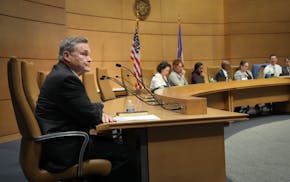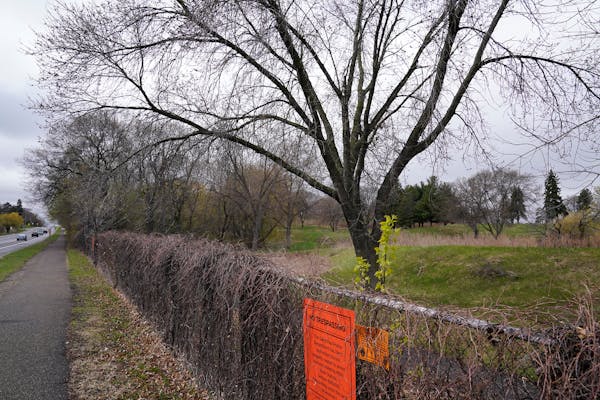Crews, with the help of a herd of voracious goats, will dig up 9 acres of grass and invasive buckthorn around Maplewood City Hall with plans to transform the campus into something a bit more wild and beautiful.
They're partnering with the St. Paul-based nonprofit Great River Greening to add more native grassland habitat on city-owned land.
"It's going to be pretty visible being at the City Hall campus, but that's a good thing," said Becca Tucker, Twin Cities program manager at Great River Greening. "It's showing community members that even little efforts of native restoration can have a big impact. You don't need 100 acres outstate. You can do this work right in the middle of your community."
Other goals include increasing storm water infiltration and addressing climate change, which 16 Minnesota cities including Maplewood have labeled a crisis.
The Maplewood City Council approved the partnership this week, praising the change.
Maplewood was an early leader in the installation of rain gardens more than two decades ago to improve water quality, said Carole Gernes, the city's natural resources coordinator.
This is poised to be an even more conspicuous display of the suburb's values. The city will contribute $7,500 with the nonprofit spending $37,500 from the Environment and Natural Resources Trust Fund as well as National Fish and Wildlife Foundation on the restoration.
Great River Greening is working with nearly three dozen communities across the state this year. They are removing invasive species and unused turf grass at parks, next to municipal storm ponds, along parking lots and under power lines and replacing them with native habitat. It has helped restore 22,000 acres at nearly 400 sites across Minnesota since its inception in 1995.
The nonprofit is part of a national movement rethinking what Americans do with lawns and urban open space. According to a 2017 Scientific American report: "Lawns are the most grown crop in the U.S." Yet they feed no one.
Tucker said the interest in these kinds of transformations on public land and in people's own yards continues to grow.
Great River Greening raises money, solicits grants, provides technical and ecological expertise and guides communities through the process. That assistance is critical for smaller suburbs.
"We do apply for some grants on our own but we are smaller. There are budget constraints," Gernes said. "To have an outside partner who takes the lead is really important."
Gernes said they worked with Great River Greening a few years ago to restore the blufftop at Fish Creek Natural Area.
"They put in native plants. It was amazing. The very first year, they had plants blooming," Gernes said. "There was a dramatic increase in the number of native pollinators."
Crews will start work at City Hall this spring. The plan is to bring in goats to eat as much of the buckthorn as possible.
"It's a showy and charismatic species to have conversations around: 'What are these goats doing and why are they doing it?' " Tucker said.
The goats can also help with planting too, driving the seeds into the ground with their hooves. The nonprofit and city will work together to determine exactly what will be planted with an eye toward what the city can maintain long term. Plants used in other restorations include milkweed, butterfly weed, asters, bluestems and other native grasses.
To the west, Great River Greening is helping Little Canada add native grasses and flowers along the Thunder Bay/Westwinds Trail, which meanders underneath some power lines. Xcel Energy removed dozens of tall trees along the trail including invasive buckthorn a few years ago to reduce the risk of wildfire.
Residents were heartbroken to see the trees removed, but city leaders and residents now see an opportunity, said Bryce Shearen, Little Canada Parks & Recreation director.
They are working with the nonprofit to restore 6 acres to pollinator-friendly habitat. Shearen and a crew, with the help of U.S. Fish & Wildlife, did some winter planting along the trail this week dropping seeds on the snow that should take root when the weather warms.
Shearen said suburban residents are more and more interested in how they can better use corners of parks and even their own backyards.
"People are more open to this kind of change. We can offer those nice turf areas for people to use at sporting complexes," Shearen said. "But when they get out to our trails system, they want to bring back those natural elements."

Last-minute bill would make it harder for Hennepin County to take back control of HCMC

GOP senators grill Sen. Nicole Mitchell's attorneys during ethics hearing about her burglary charge

Ethics panel takes up complaint against Republican senator who sent graphic video link
White Earth tribal member charged with felony cannabis possession after raid on tobacco shop

